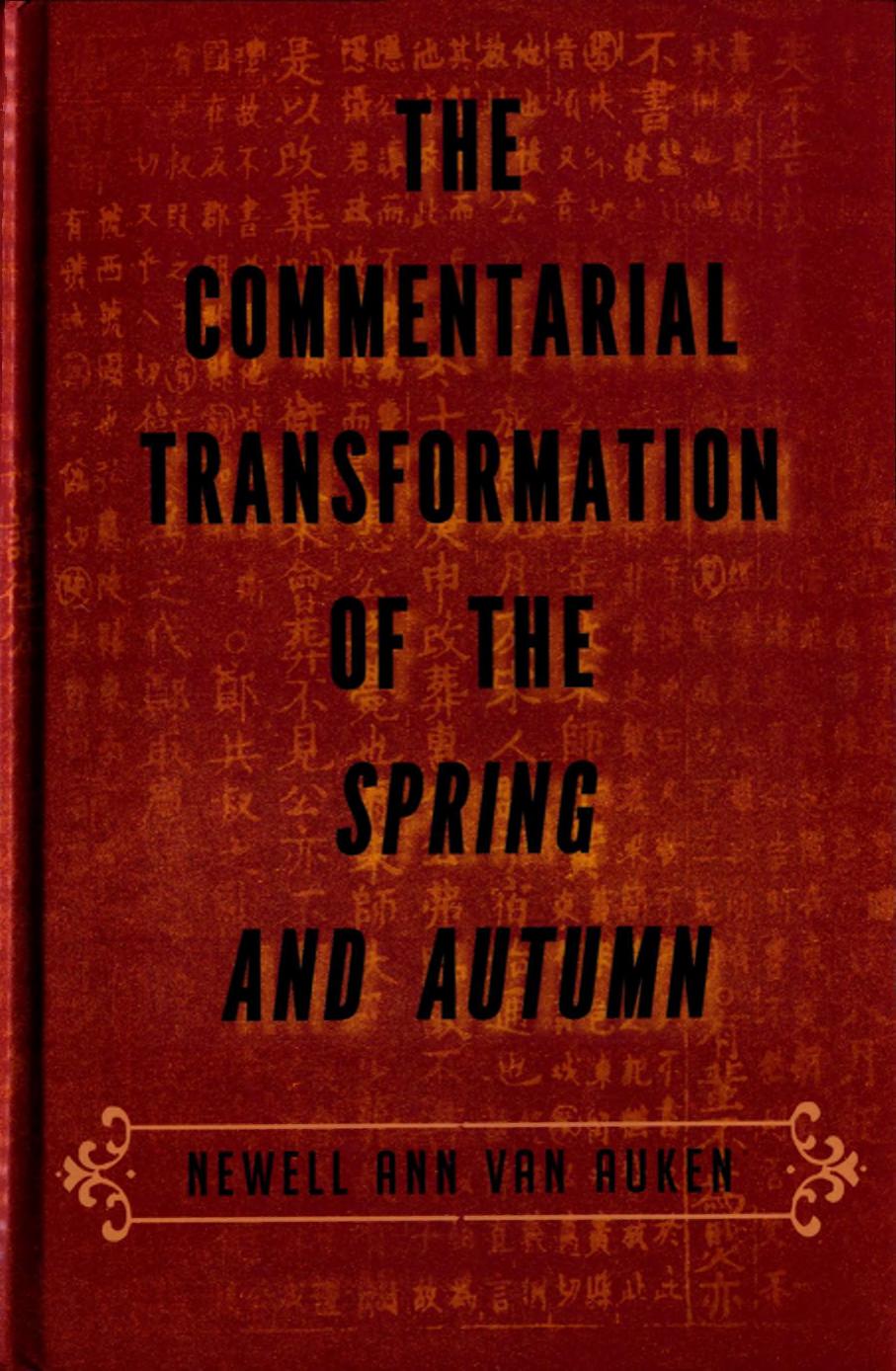The Commentarial Transformation of the Spring and Autumn by Newell Ann Van Auken

Author:Newell Ann Van Auken
Language: eng
Format: epub, pdf
Publisher: State University of New York Press
Published: 2016-03-12T16:00:00+00:00
Chapter 7
From Recording Rules to Written Text
Conceptual Antecedents to Gōngyáng and Gǔliáng in the Direct Commentaries
The careful comparison of the direct commentary lines with corresponding Gōngyáng and Gǔliáng comments undertaken in the preceding chapter revealed sporadic points of correspondence but no evidence of regular, direct contact. Nonetheless, occasional cases of overlap offer tantalizing hints that these traditions did not develop entirely separate from one another. The present chapter examines conceptual affinities between the Zuǒ Tradition direct commentary and the Gōngyáng and Gǔliáng traditions, demonstrating that despite the lack of evidence for copying or direct borrowing, ideas and interpretive strategies must have been shared among the traditions, and throwing light on the direction of the transfer.
Not all shared ideas about the Spring and Autumn that appear in the commentarial traditions can be taken as evidence of interchange among the commentaries, and some may instead be based on accurate observations about the records and their origins. For example, fundamental to all interpretations is the notion that the Spring and Autumn is a rules-based text.1 Given that the records do give every indication of having been written in accord with formal rules, this shared assumption does not constitute proof of contact among the traditions.2 Likewise, all three note that the records accord special status to the state of Lǔ and its agents, but this too is a valid observation based on features of the records, and thus this idea by itself does not constitute evidence of contact or interchange. It is entirely possible that multiple traditions arrived at these notions independently.
Yet other shared conceptions of the Spring and Autumn are not based on direct observation of the records and cannot be explained as having arisen independently. One example is the assumption, manifested in varying ways in all three traditions, that irregularities in how individuals were identified were meaningful and denoted positive or negative evaluations. This claim cannot be easily explained by the records themselves, and it thus must have been a basic principle common to a broader tradition of explaining the Spring and Autumn. The present chapter examines this and similar principles common to the three interpretive traditions, in an effort to determine what such conceptual affinities can tell us about the relationship (however indirect) between the direct commentary passages and the Gōngyáng and Gǔliáng traditions. This examination reveals that despite the lack of direct exchange, common ideas and interpretations were shared across a broader tradition of Spring and Autumn interpretation, thus confirming the conclusions of the preceding chapter.
The analysis in the present chapter suggests that direct commentary remarks embody an earlier and more rudimentary approach to explaining the Spring and Autumn, whereas the relative sophistication and detail of the Gōngyáng and Gǔliáng represent a later stage in the development of Spring and Autumn interpretation. Many of the simple interpretive strategies employed by the direct commentaries were also used by Gōngyáng and Gǔliáng, but they employed more elaborate versions of these strategies and often applied them to a wider and more varied group of records.
Download
The Commentarial Transformation of the Spring and Autumn by Newell Ann Van Auken.pdf
This site does not store any files on its server. We only index and link to content provided by other sites. Please contact the content providers to delete copyright contents if any and email us, we'll remove relevant links or contents immediately.
4 3 2 1: A Novel by Paul Auster(11800)
The handmaid's tale by Margaret Atwood(7459)
Giovanni's Room by James Baldwin(6818)
Big Magic: Creative Living Beyond Fear by Elizabeth Gilbert(5360)
Asking the Right Questions: A Guide to Critical Thinking by M. Neil Browne & Stuart M. Keeley(5360)
Ego Is the Enemy by Ryan Holiday(4963)
On Writing A Memoir of the Craft by Stephen King(4668)
The Body: A Guide for Occupants by Bill Bryson(4590)
Ken Follett - World without end by Ken Follett(4449)
Bluets by Maggie Nelson(4268)
Adulting by Kelly Williams Brown(4239)
Eat That Frog! by Brian Tracy(4165)
Guilty Pleasures by Laurell K Hamilton(4124)
White Noise - A Novel by Don DeLillo(3834)
The Poetry of Pablo Neruda by Pablo Neruda(3821)
Fingerprints of the Gods by Graham Hancock(3742)
Alive: The Story of the Andes Survivors by Piers Paul Read(3737)
The Book of Joy by Dalai Lama(3704)
The Bookshop by Penelope Fitzgerald(3622)
